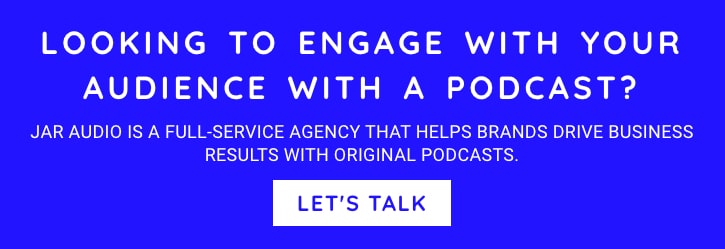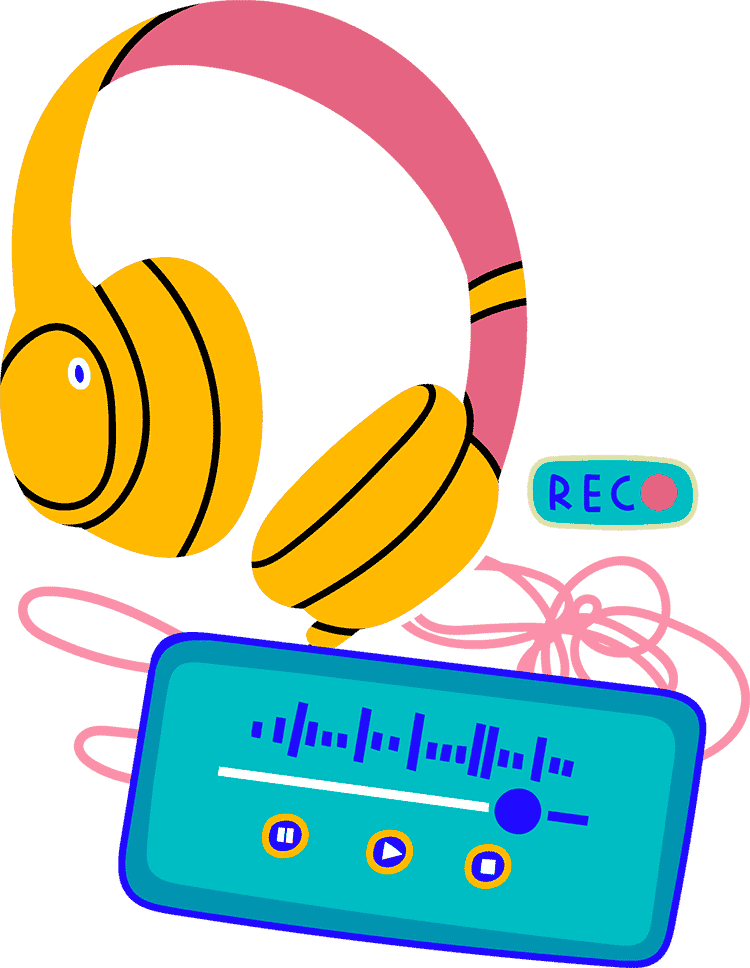TL;DRBranded podcasts fail when teams treat them like ad-hoc campaigns instead of building an evergreen content strategy. Record for long-term value, track retention over downloads, build systematic repurposing pipelines, eliminate seasonal gaps, and design for bingeability to transform podcasts into content ecosystems with measurable business results.
|
I’ve watched teams pour resources into podcast launches, then wonder why the ROI feels thin.
The problem isn’t the content. The mindset is wrong.
They’re treating a compounding asset like a campaign.
Here’s what changes when you build a podcast flywheel instead.
How to record for long-term value
Your back catalog often drives significant listening long after release. When developing an evergreen content strategy, older episodes continue generating value well beyond the initial launch window.
Record with this in mind.
Anchor episodes to evergreen ideas. Skip the trending topics expiring in three weeks. Focus on questions your audience will still ask in six months.
Build context into every episode. A listener discovering Episode 1 two years from now shouldn’t feel lost. Frame ideas clearly. Reintroduce themes. Make each episode work as both a standalone piece and part of a series.
Capture extra tape. Behind-the-scenes moments, unused insights, and off-mic reactions become your future short-form content. Keep recording after the main interview ends.
The bottom line: Recording becomes less about finishing an episode and more about feeding a content ecosystem delivering value months or years later.
Why retention matters more than downloads
Downloads tell you someone clicked.
Retention tells you they stayed.
Listeners who engage with multiple episodes show substantially higher conversion rates. The audience listening to three or more episodes consistently clicks through, signs up, and shares your content.
Watch your drop-off points. If listeners bail at minute six every episode, you have a story problem. Retention data shows you exactly where you lose attention.
Aim for 75% listening duration or higher. This benchmark indicates your content earns attention instead of capturing it briefly.
[Fun fact: According to Edison Research, individuals with Apple CarPlay or Android Auto in their vehicles typically engage with podcasts for nearly twice the duration compared to those without these features.]
Trust builds through repeated exposure.
Retention measures trust. Downloads measure curiosity.
The bottom line: The difference between reach and relationship determines which metric pays off in the long run.
What an efficient repurposing pipeline looks like
Systematic content repurposing reduces creation time significantly compared to starting from scratch for each platform.
Here’s an efficient post-recording pipeline:
Phase 1: Flag reusable moments (Day 0-1)
Log timestamps for quotable moments, emotional beats, and data soundbites while the recording is fresh.
Phase 2: Extract derivative assets (Day 5-10)
Create 3-5 short video clips, audiograms, quote graphics, a companion blog post, and email newsletter content from the master recording.
Phase 3: Stagger distribution (Day 10-20)
Release clips across 3-4 weeks to sustain momentum. Each piece gets a different call to action.
Phase 4: Resurface old content (Ongoing)
Tie older episodes to new trends or company announcements. Build thematic playlists. Treat your back catalog as active inventory.
The bottom line: Most teams stop at editing the main episode. Building the full flywheel multiplies your content output without adding production time.
How to eliminate seasonal gaps
Stopping between seasons kills momentum.
Your audience forgets about you. Algorithms deprioritize your show.
If your podcast needs a launch every year, you have content fatigue.
Keep publishing between seasons. Release bonus episodes, listener Q&As, or highlight reels from previous seasons. Stay present in your audience’s feed.
Plan continuity before you finish Season Know what comes next before you go dark. This prevents the scramble creating gaps.
The bottom line: Campaigns burn out. Shows build equity. The difference is consistency.
How to design for bingeability
Bingeability drives retention.
Retention proves worth over time.
Create through-lines across episodes. Great hosts build connections between episodes rewarding listeners who stick around. Reference earlier conversations. Build on previous themes.
Make each episode feel like part of something bigger. Standalone episodes work for discovery. Connected episodes create fans.
Coach your host for continuity. The host’s voice and perspective should feel consistent across episodes. This consistency makes your show feel like a trusted companion instead of a random collection of interviews.
The bottom line: Connected storytelling transforms casual listeners into your most valuable audience segment.
Campaign mindset vs. flywheel mindset
The campaign mindset asks: How fast do we grow?
The flywheel mindset asks: Who are we growing with?
One chases reach. The other builds relationships.
When you implement these five practices, your podcast becomes a compounding asset. Each episode feeds your content ecosystem. Your back catalog keeps working while you sleep. Retained listeners become your most valuable audience segment.
The ROI stops hiding in launch week metrics. It shows up in the long tail, where trust compounds into business results.
Frequently asked questions
What metrics should I track instead of downloads?
Track retention rate, listening duration (aim for 75% or higher), subscriber growth, and conversion rates from listeners who engage with 3+ episodes. These metrics reveal relationship depth, not surface-level reach.
How long does it take to build a repurposing pipeline?
A basic pipeline takes 10-20 days per episode initially. Once established, you’ll generate 10-15 derivative assets systematically with significantly less effort than creating each piece from scratch.
Should I publish weekly or wait to batch episodes?
Consistency matters more than frequency. Publishing weekly builds habits with your audience. Batching episodes for seasonal releases creates gaps killing momentum. Choose a sustainable cadence you sustain year-round.
What’s the minimum viable repurposing strategy?
Start with: transcript for SEO, 3 short video clips for social, 2-3 quote graphics, and one companion blog post. This foundation gives you multi-channel presence without overwhelming your team.
How do I measure long-tail ROI?
Track back catalog performance monthly. Measure: total listens from episodes older than 90 days, conversion attribution from older episodes, and brand lift scores among retained listeners versus one-time listeners.
What if my podcast is seasonal by nature?
Fill gaps with bonus content, listener Q&As, highlight reels, or behind-the-scenes episodes. The goal is maintaining presence in your audience’s feed, not producing full episodes year-round.
How many episodes before I see compounding effects?
Most branded shows see retention patterns emerge after 5-7 episodes. Compounding effects become measurable around episode 10-12, when your back catalog starts generating consistent traffic independent of new releases.
Do I need video for podcast repurposing?
Video expands your repurposing options for YouTube, LinkedIn, and Instagram. Audio-only shows work fine, but adding video during recording multiplies your content output without adding significant production time.
Key takeaways
- Treat podcasts as compounding assets, not campaigns. Back catalogs continue driving value long after initial release.
- Measure retention over downloads. Engaged listeners who return show substantially higher conversion rates.
- Build systematic repurposing pipelines. One recording should generate 10-15 derivative assets across multiple channels.
- Eliminate seasonal gaps. Consistency builds equity. Campaigns burn out.
- Design for bingeability. Connected storytelling transforms casual listeners into your most valuable audience segment.
- The ROI shows up in the long tail, where trust compounds into measurable business results.
Roger transitioned from a 22 year career in advertising account management to co-founding JAR, a podcast podcast production agency. As CEO of JAR, he propels the company’s growth by prioritizing audience engagement and podcast marketing. Under his guidance, JAR flourishes with a global clientele, aiming to broaden its reach across North America and revolutionize brand connections through immersive storytelling.



